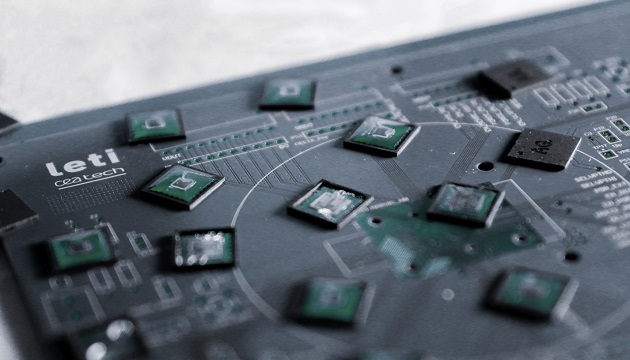In scientists’ quest for ambient-energy sources that can power sensor nodes in remote environments or difficult-to-reach settings where batteries are impractical, CEA-Leti takes a wide view. It is investigating harvesting systems ranging from micrometer-and-millimeter scale to centimeter scale or larger.
The institute presented two papers on energy-harvesting systems for both of those size scales at ISSCC 2020:
- “Self-Tunable Phase-Shifted SECE Piezoelectric Energy Harvesting IC with a 30nW MPPT achieving 446% Energy-Bandwidth Improvement and 94% Efficiency”, and
- “Electromagnetic Mechanical Energy Harvester IC with no off-chip Component and One switching period MPPT achieving up to 95.9% end-to-end Efficiency and 460% Energy Extraction Gain”.
Energy harvesting is the action of scavenging available energy in the environment from vibrations, thermal gradients, or solar radiation and turning it into storable electrical energy. The first paper presents a system in which vibration energy is converted into electrical energy by means of a piezoelectric material fixed on a beam. The second project explored converting vibration energy into electrical energy by means of an oscillating magnet in a coil. The harvesters in both approaches required specific IC interfaces to enhance the stored, harvested energy.
Systems that can be powered by surrounding energy sources allow longer lifetimes than battery-powered systems. That is particularly important in applications such as sensors implanted inside the human body, or sensors placed in critical environments such as cars, trains and airplanes. While the first paper focuses on small-scale energy harvesting for applications where the system must be as small as possible, i.e. inside the body, the second paper focuses on larger scale devices, i.e. for home automation (domotics) and aeronautic applications.
“One of the major issues when harvesting energy from vibrations is the bandwidth of the harvester, which is especially narrow around the resonant frequency of the harvester,” said Adrien Morel, lead author of the first paper. “Indeed, vibrations are, by nature, unpredictable: their frequency may vary with time, which does not associate well with the fixed resonant frequency of vibration energy harvesters.”
Self-Tunable Piezoelectric Energy Harvesting IC
The team in the piezoelectric energy-harvesting IC study, which included researchers from the SYMME lab at Université Savoie Mont Blanc, designed an adaptive electrical interface that both collects the energy from the harvester and dynamically adjusts the harvester’s resonant frequency. This results in a 446 percent larger harvesting bandwidth, which is the largest bandwidth among state-of-the-art solutions. The harvesting and tuning are self-powered, and their total consumption (around 1µW) is at least two orders of magnitude lower than the harvested energy from vibrations that are available in the environment (100µW to 1mW).
“The end-to-end efficiency of the circuit is as high as 94 percent, which is among the highest efficiency compared to other harvesting circuits that can be found in the literature,” Morel said.
Electromagnetic Energy Harvester IC
The second paper describes fabrication of a harvester IC that reaches the published highest end-to-end efficiency, up to 95.9 percent, and dramatically reduces the cost of the bill of materials. The IC achieves 210 percent and 460 percent energy-extraction gains, respectively, compared to the full-bridge rectifier in periodic vibrations and shock conditions.
“The unprecedented 95.9 percent end-to-end efficiency is the multiplicative factor between the extraction efficiency and the conversion efficiency,” said Anthony Quelen, lead author of the second paper. “The extraction efficiency is maximized with the real- time optimal input impedance generator. The conversion efficiency is maximized with the new boost architecture using the harvester coil.”
The 460 percent energy-extraction gain contrasts the harvested energy with the new IC interface and the harvested energy with a standard full-bridge rectifier interface under shock-mode excitation.
These results point the way toward significant commercialization of vibration-powered systems. These harvesters could complement or replace batteries, making possible the widespread deployment of sensor nodes for monitoring and getting data from forests, deserts, bridges, and buildings. They also could lead to the development of autonomous (battery-less) sensors for use in harsh environments, such as high temperatures, and in places where access is difficult, such as the human body or airplane engines. In addition, low-cost ICs that maximize end-to-end efficiency are key to driving more users to deploy Internet of Things networks with multiple sensing devices.
For more information, visit: www.leti-cea.com








